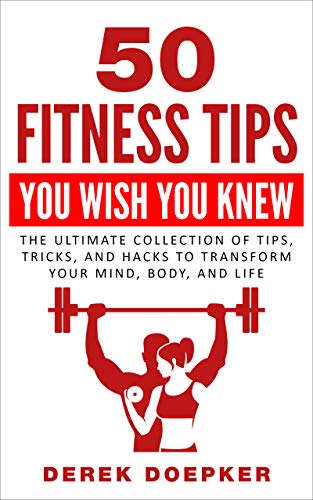
You're in the right place if you want to follow fitness Instagram accounts. There are over 500 million active Instagram users. It is easy to find thousands more accounts with the same interests. But which accounts are the most interesting? And which ones should you be following? These are some great tips for creating a successful health and fitness account. This article offers some practical advice on how best to create and maintain a fitness program.
For starting an Instagram account for fitness, you should find someone with the same background as you. This way, you can find inspiration and motivation. It is important to be easy to follow a trainer. It is important to find a trainer who will support you. Many of these trainers will provide a range of workout routines and tips to suit different levels of fitness. This will increase your chances for finding a new customer.

Next, you will need to know how to promote an Instagram fitness account. Here are some examples of popular fitness IG accounts that will help you achieve your goals. A branded Instagram page can help increase your reach and get word out about products. A great account for fitness will feature products and show off the brand. But what if the brand has to be famous? It's important that you are relatable.
These accounts feature inspiring content and are the most popular on fitness IG. These accounts will inspire you to stay motivated, and help you get inspired in your workouts. Women-only accounts are the most successful in fitness, so a female account should inspire women who are going through difficult times. You don't have to be a woman to use a fitness IG page.
Many of the most popular IG accounts for fitness will feature the work of athletes. Some of the best accounts will promote the latest news about sports. A popular account that features the latest news regarding athletes will also highlight a healthy lifestyle. Apart from sharing workout tips, a fitness IG should also highlight the brand's product. To increase brand visibility, companies should also market the products. The account should allow people to interact with it easily.

A fitness IG page should have a strong following. Passionate individuals should have a large following. A gram should include photos of exercise sessions. This will help them gain a lot more followers and keep them motivated throughout the day. It's important to not only follow these accounts but also to follow other people in the fitness industry. Keep following their posts because you never know who might be inspired by your photos on Instagram.
FAQ
What is the difference between sugar and fat?
Fat is an energy source that comes directly from food. Sugar is a sweetener found in fruits, vegetables, and other foods. Both fats and sugars provide the same number of calories. Fats have twice the calories of sugars, however.
Fats are stored in your body and can cause obesity. They may cause cholesterol buildup and lead to strokes or heart attacks.
Sugars can be quickly absorbed by your body and give you instant energy. This causes blood sugar levels to rise. High blood glucose levels are dangerous as it can increase the likelihood of developing type 2 diabetes.
What is the best way to live a healthy lifestyle?
A healthy lifestyle means eating healthy foods, exercising regularly, sleeping well, and avoiding stress. These are the keys to a healthy and long-lasting life.
You can start by making small changes in your diet and exercise routine. To lose weight, you can start walking for 30 mins each day. You can also take up dancing or swimming if you are looking to be more active. An online fitness program such as Strava or Fitbit that tracks your activity could be a good option.
Increase immunity with herbs or supplements
You can boost your immune function with herbs and natural remedies. There are many natural remedies that can boost immunity, including echinacea (oregano), ginger, ginkgo biloba and vitamin C.
However, these herbal remedies should not replace conventional medical treatment. These herbal remedies can cause nausea, vomiting, stomach cramps or dizziness.
How can my blood pressure be controlled?
The first thing you need to do is find out what causes high blood pressure. Then you need to take steps to reduce this cause. This could include eating less salt, losing weight if necessary, taking medication, etc.
Also, make sure to get enough exercise. If you don't have time for regular exercise, then try walking as often as possible.
You should join a gym if you are unhappy with your exercise routine. You will probably join a gym where you can meet other people with similar goals. It's easier for you to exercise if you know that someone will be watching you at the club.
Statistics
- WHO recommends consuming less than 5% of total energy intake for additional health benefits. (who.int)
- According to the Physical Activity Guidelines for Americans, we should strive for at least 150 minutes of moderate intensity activity each week (54Trusted Source Smoking, harmful use of drugs, and alcohol abuse can all seriously negatively affect your health. (healthline.com)
- In both adults and children, the intake of free sugars should be reduced to less than 10% of total energy intake. (who.int)
- The Dietary Guidelines for Americans recommend keeping added sugar intake below 10% of your daily calorie intake, while the World Health Organization recommends slashing added sugars to 5% or less of your daily calories for optimal health (59Trusted (healthline.com)
External Links
How To
What does "vitamin" actually mean?
Vitamins can be described as organic compounds found in food. Vitamins allow us to absorb nutrients from food. Vitamins are not made by the body, so they must be obtained through food.
There are two types: water-soluble and fat-soluble vitamins. Water-soluble vitamins dissolve easily when they are dissolved in water. Vitamin C,B1(thiamine), B2 (2riboflavin), and B3 (3niacin), as well as vitamin C,B1, B2 (riboflavin), and B3 (niacin), vitamin B6 (pyridoxine), vitamin folic acid (biotin), pantothenic, and choline are examples. Fat-soluble vitamins can be stored in the liver or in fatty tissue. These include vitamin D, E and K, as well as beta carotene.
Vitamins are classified according to their biological activity. There are eight major types of vitamins:
-
A - vital for healthy growth.
-
C is important for nerve function and energy production.
-
D – Essential for healthy teeth, bones and joints
-
E is required for good vision and reproduction.
-
K - Required for healthy nerves and muscles.
-
P - vital for building strong bones andteeth.
-
Q – aids digestion of iron and iron absorption
-
R is required for the production of red blood cells.
The recommended daily allowance (RDA) of vitamins varies depending on age, gender, and physical condition. The U.S. Food and Drug Administration sets RDA values.
For adults aged 19 and older, the RDA for vitamin B is 400 micrograms daily. However, pregnant women need 600 micrograms per day because it is important for fetal development. Children ages 1-8 require 900 micrograms per day. Infants under one year of age require 700 micrograms per day, but this amount decreases to 500 micrograms per day between 9 months and 12 months of age.
Children ages 1-18years who are obese need 800 micrograms per day while those who are overweight need 1000 micrograms per day and children who are underweight need 1200 micrograms per day to meet their nutritional needs.
Children aged 4-8 years old who have been diagnosed as having anemia require 2200 micrograms of vitamin C per day.
Adults over 50 years of age need 2000 micrograms per day for general health. Mothers who are pregnant, nursing, or have a high nutrient need will require 3000 micrograms a day.
1500 micrograms is the recommended daily intake for adults aged 70+, who lose approximately 10% of muscle each year.
Women who are pregnant, nursing or breastfeeding need more than the RDA. Pregnant mothers need 4000 micrograms per daily during pregnancy and 2500 after giving birth. Breastfeeding mothers need 5000 mg per day when breastmilk is being produced.